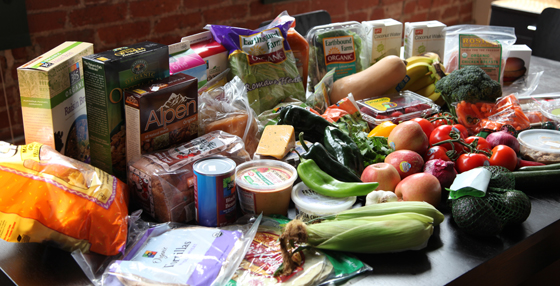 Ever notice those produce stickers on the fruits and veggies that you buy at the grocery store? As it turns out, the numbers on those so-called PLU (short for “price look-up”) stickers actually tell you a whole lot.
Ever notice those produce stickers on the fruits and veggies that you buy at the grocery store? As it turns out, the numbers on those so-called PLU (short for “price look-up”) stickers actually tell you a whole lot.
Here’s what you need to know:
- 4 digits: If the code is four digits long, then the item was conventionally grown. For example, 4139 designates a conventional Granny Smith apple.
- 5 digits, beginning with an 8: If the five digit code begins with an 8, then the item was genetically modified (GMO). 84139 refers to a genetically modified Granny Smith apple.
- 5 digits, beginning with a 9: If the five digit code begins with a 9, then the item was grown organically. A code of 94139, for example, indicates an organic Granny Smith apple.
While the PLU codes aren’t universal, the system is used in the United States, UK, Canada, Australia, France and New Zealand. In addition, any imports to these countries are also tagged accordingly - regardless of the country of origin.
While the debate over whether or not to eat genetically modified or non-organic food is beyond the scope of the article, using the PLU code is an easy trick to quickly categorize the produce that you buy.
Do you prefer buying organic produce over genetically modified or conventional produce? Let me know in the comments below.










